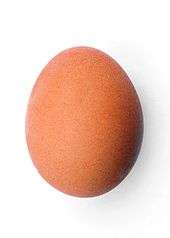Definify.com
Definition 2026
蛋
蛋
See also: 疍
Translingual
Han character
蛋 (radical 142 虫+5, 11 strokes, cangjie input 弓人中一戈 (NOLMI), four-corner 17136)
See also
References
- KangXi: page 1081, character 11
- Dai Kanwa Jiten: character 32977
- Dae Jaweon: page 1549, character 5
- Hanyu Da Zidian: volume 4, page 2845, character 18
- Unihan data for U+86CB
Chinese
|
simp. and trad. |
蛋 | |
|---|---|---|
| alt. forms |
疍 蜑 |
|

蛋
Glyph origin
| Characters in the same phonetic series (延) (Zhengzhang, 2003) | |
|---|---|
| Old Chinese | |
| 唌 | *l'aːn |
| 誕 | *l'aːnʔ |
| 蜑 | *l'aːnʔ |
| 蛋 | *l'aːns |
| 硟 | *slan, *l̥ʰjans |
| 涎 | *ljan, *lans |
| 脠 | *l̥ʰan, *hljan |
| 梴 | *l̥ʰan |
| 鋋 | *ɦljan, *lan |
| 埏 | *hljan, *lan |
| 挻 | *hljan |
| 鯅 | *hljan |
| 延 | *lan, *lans |
| 筵 | *lan |
| 蜒 | *lan |
| 狿 | *lan, *lans |
| 郔 | *lan |
| 綖 | *lan |
| 莚 | *lan, *lans |
Phono-semantic compound (形聲, OC *l'aːns) : phonetic 延 (OC *lan, *lans) + semantic 虫 (“snake, insect”). 延 is abbreviated to 疋.
Pronunciation
- Mandarin
- Cantonese (Jyutping): daan6, daan6-2
- Min Dong (BUC): dáng
- Min Nan (POJ): tàn
- Wu (Wiktionary): de (T3)
- Mandarin
- (Standard Chinese, Beijing)+
- Pinyin:
- Zhuyin: ㄉㄢˋ
- Wade-Giles: tan4
- Gwoyeu Romatzyh: dann
- IPA (key): /ta̠n⁵¹/
-

- (Standard Chinese, Beijing)+
- Cantonese
- (Standard Cantonese, Guangzhou)+
- Jyutping: daan6, daan6-2
- Yale: daahn, dáan
- Cantonese Pinyin: daan6, daan6-2
- IPA (key): /tɑːn²²/, /tɑːn²²⁻³⁵/
- (Standard Cantonese, Guangzhou)+
- Min Dong
- (Fuzhou)
- Bàng-uâ-cê: dáng
- IPA (key): /tɑŋ²¹³/
- (Fuzhou)
- Min Nan
- (Hokkien)
- Pe̍h-ōe-jī: tàn
- Tâi-lô: tàn
- Phofsit Daibuun: daxn
- IPA (Xiamen): /tan²¹/
- IPA (Quanzhou): /tan⁴¹/
- IPA (Zhangzhou): /tan²¹/
- IPA (Taipei): /tan¹¹/
- IPA (Kaohsiung): /tan²¹/
- (Hokkien)
- Wu
- (Shanghainese)
- Wiktionary: de (T3)
- IPA (key): /d̻ᴇ²³/
- (Shanghainese)
Definitions
蛋
- egg
- egg-shaped object
- 跳蛋 ― tiàodàn ― love egg
- (slang) ball; testicle
- suffix denoting “person of certain characteristics”, usually with a pejorative tone
- 傻蛋 ― shǎdàn ― goofball
See also
- 卵 (luǎn, “egg”)
Compounds
Derived terms from 蛋
|
|
|
Japanese
Kanji
蛋
- an egg
Readings
Compounds
Compounds
|
Usage notes
Seldom used in Japanese. Not used in isolation.
The egg sense and tamago reading is more commonly spelled either 玉子 or 卵.
Korean
Hanja
蛋 • (dan) (hangeul 단, revised dan, McCune-Reischauer tan, Yale tan)
- This term needs a translation to English. Please help out and add a translation, then remove the text
{{rfdef}}.
Vietnamese
Han character
蛋 (đản)
- This term needs a translation to English. Please help out and add a translation, then remove the text
{{rfdef}}.